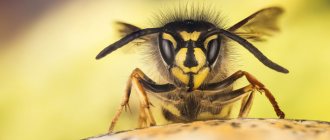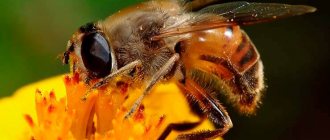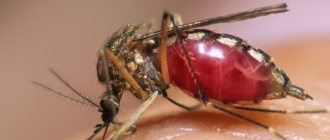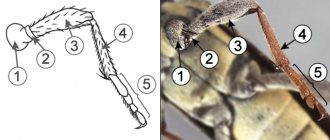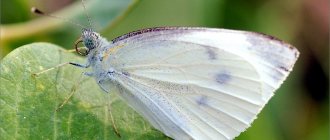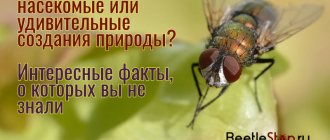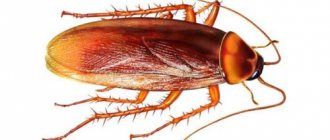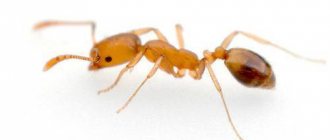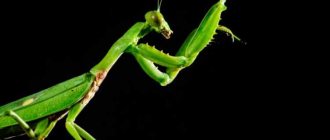We know a lot about bees. Everyone knows about the existence of a number of medicines based on honey. Honey is very actively used in folk medicine and cosmetics. Millions of people daily use the product of bees - honey - for food or to improve the condition of their skin and hair, using it in masks and creams.
Honey has firmly entered our lives and makes it healthier and sweeter. But very few people think about what these striped workers actually look like and what they use to carry out their work. Have you ever wondered how many wings a bee has ? But the answer is not as obvious as it might seem at first glance. Bees become angry if you interfere with their work, and they can also sting, so not every daredevil will look at a bee landing on their hand. At first glance, everyone will immediately say how many wings a bee has - two! And they will turn out to be wrong. After all, these little workers have two pairs of wings. One pair is larger and is attached to the second breast segment, and the second is smaller and is attached to the third breast segment.
Bee structure
Bees are flying insects of the order Hymenoptera, directly related to ants and wasps. Contrary to what ordinary people think, there are a great many varieties of bee families: in Europe alone, the bee fauna consists of more than 1965 species. Despite this scope, representatives of all families are anatomically similar.
The body color of the bees we are used to is black and yellow. The Hymenoptera has six legs and large compound eyes. The sting is located at the back.
The size of the insect ranges from 2.1 mm (dwarf bee) to 3.9 cm. The largest representative of the bee fauna is the Indonesian megachilid.
Each winged worker has a proboscis - a special device for extracting nectar from flowers. The head has antennae (antennae). In females, the number of segments on the antennae is 12, and in males - 13. There are wax glands on the body that produce beeswax.
The hind wings mainly serve as a rudder, with the help of which the bees can make turns during flight.
The outside of the body is covered with a chitinous cuticle, on top of which numerous branched villi are located on the body. The “fur coat” generates static electricity and collects pollen. From time to time, the bee sweeps away the stuck particles with brushes and collects pollen in a special reservoir - a basket located between its hind legs.
Bees live in families, which represent a single organized system, where each inhabitant performs its own function. This affects the structure of the body. Working females have collecting apparatuses and long proboscis, but the genitals are atrophied. Larger and more elongated queen bees do not collect nectar and pollen, so the body is not equipped with working supplements. Their body is designed for active mating and egg laying. Drones also do not have long noses or collecting structures. The male's job is to fertilize the uterus, which is why drones have reproductive organs.
Common Breeds
There are a large number of honey bees, they can be distinguished by appearance, color and some other features. A description of the most popular bees can be found in the table:
| Types of honey bees | Description |
| European dark | The most common honey bee. The proboscis of these insects is short, and the body has a dark tint. The bee itself is large. Light honey. The bee is a little aggressive and irritable. Among the advantages are good productivity, resistance to diseases and weather conditions. A family of such bees can bring 30 kg of honey per season. |
| Ukrainian steppe | It is small in size, yellow in color, and does not show aggressiveness. Among the advantages: resistance to diseases and wintering. Such a family is capable of producing 40 kg of honey per season, more than other varieties. |
| Caucasian | It is almost the same in size as the Ukrainian one, but the color is yellow with a gray tint. Since bees have a long proboscis, they can get nectar even from deep flowers. They work in any weather, are not aggressive, and are not prone to disease. During the season, the family brings 40 kg of honey. |
| Italian | Place of birth: Apennines. The proboscis of these bees is long, the abdomen is yellow, and rings are clearly visible around the body. The bee is clean and destroys harmful insects approaching the hive. The hives are cleaned well and often, which has a positive effect on productivity. It is resistant to diseases, but productivity is lower than that of other honey bees. |
| Carpathian | The body is gray in color, there is no aggressiveness. Among the advantages are swarming, resistance to disease and cold, high productivity of 40 kg. |
Characteristics of bee wings
Let's start by finding the answer to the question, how many pairs of wings does a bee have? According to the reference book, each representative of the bee fauna has two pairs of leathery membranous wings, or four separate wings. It is noteworthy that the rear blades are smaller than the front ones. They are stretched over a chitinous structure and attached to the chest part of the body.
The most powerful muscles are located here, because the thoracic region not only ensures flight and the functioning of the legs, but also carries additional load. There are no muscles on the wings themselves; all flight muscles are located on the body.
Bee wings are living structures, not keratinized dead surfaces. At the base of the wing is a tubular vein of chitin, which branches out like a river bed and becomes smaller and thinner segments on the flight surfaces.
The hemolymph moves through the chitinous cavities, and metabolism occurs in the aircraft. The blades are covered with fine pile. There is a crease on the lower edge of the upper wing, and the lower wing is equipped with hitch hooks.
Main functions of wings
Flight
Of course, the main function of the wings is to provide flight over long distances, and the ability to carry additional cargo on the body.
The wings, located on one side, interlock with each other using small hooks, so a single plane is formed in flight. The teeth are located on the lower wing. When the insect takes flight, a couple of dozen hooks grip the groove-like fold of the upper blade, creating a wide flight surface on each side. If necessary, the pair is unfastened, and the wing parts slide one over the other.
This feature makes life easier for the insect. For flight mode, a single design with improved aerodynamic properties is more convenient, but when the bee plunges into the corolla of a flower or moves in the cells of the hive, the large wings fold like a fan, forming two parts. In the resting position, the wings are pressed tightly against the body, and the large front blade covers the rear wing.
Lifestyle and habitat
The favorite habitats of wild bees are mountain crevices, earthen holes, and hollows of old trees. Bees choose areas that are located near water bodies and are also reliably protected from difficult weather conditions and wind.
Bee's nest
In mild climates, nests are built high in trees. Having chosen a suitable place to live, they begin to build honeycombs from hexagonal-shaped cells. Each cell has thin walls. The honeycombs are mounted vertically and have an elongated shape. Special frames are adapted for domestic bees, and wild insects build honeycombs on their own.
Before the onset of cold weather, the main task of bees is to stock up on provisions and insulate their homes. They do this with the help of propolis, which covers all the cracks. Then the insects move to the lower part of the nest, where they stay together, periodically changing places.
Honeycomb
Interesting fact : comfortable temperature for bees is 25-36℃. In winter, inside the nest they maintain a temperature of about 13℃.
In general, wild bees differ from domestic ones only in certain behavioral and character traits. For example, they are more aggressive because they have more natural enemies and are forced to protect their reserves. They are also hardier, more resistant to cold and disease.
Interesting: Spiders
